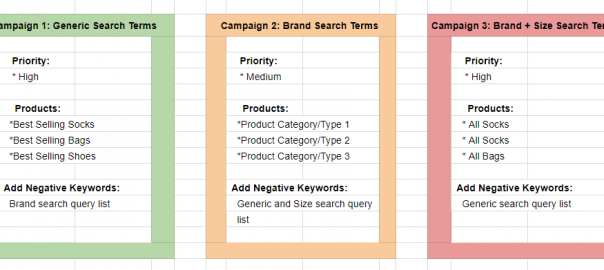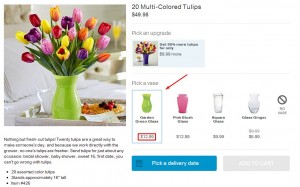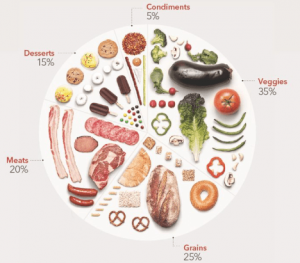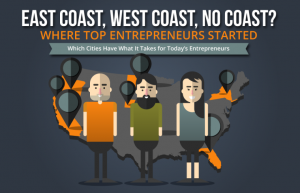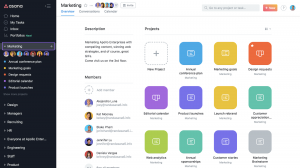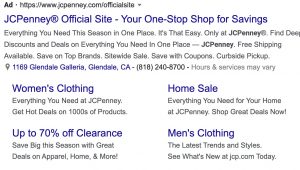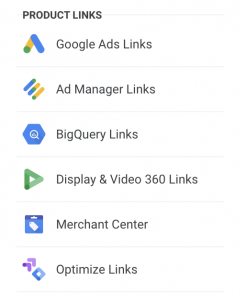— June 27, 2018
Google Shopping is one of the most important Google advertising options eCommerce business owners have at their disposal.
The key to Google Shopping success lies in the building and implementation of good campaign structures from the get-go. In short, this means splitting your campaigns into high, medium and low priority campaigns that include different varieties or groupings of products, to ensure you’re capitalizing on your full ROI potential.
To be able to maximize success, it’s important to understand how Google Shopping structures and ad and product groups work. Like with Google AdWords, each campaign should include several ad groups, and within your Shopping Account you want to make sure you’re dividing your products into groups. The problem is that many eCommerce advertisers have a lot on their AdWords plates, so to speak, making them reluctant to spend the extra time and energy needed to set up, test and optimize granular Google Shopping campaigns to find the winning balance for them.
However, if you want to get ahead of the competition, you are going to have to put in some extra effort and get your hands dirty.
In this post, we will show you 6 beginner and expert strategies for building the best Google Shopping campaign structures to ensure maximum success. On the surface Google Shopping options may seem limited, but with the right strategy, you can work around its perceived limitations to gain more control.
But first (to put it in cooking terms) – you can’t create the perfect dish without first understanding the ingredients.
Here are some basics you need to know:
Basic Google Shopping Campaign Structure Elements
Google Shopping Campaign Priority Options
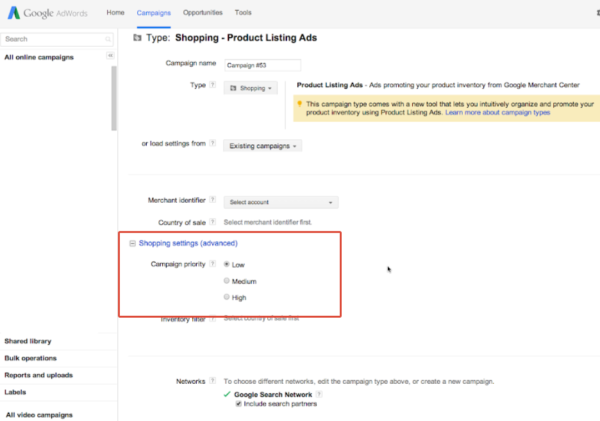
Within Google Shopping Campaigns, you have access to three campaign priorities: high, medium and low priority. There are some strategy options, for example, which involve priority settings. Although we get into this in more detail later, here is a rough outline to get you started. Ideally, you would use high-priority campaigns for your newly arrived products, best-sellers or clearance items – basically those products you would like to sell above any others. Medium priority campaigns are best suited for Shopping campaigns pointing to product categories or lines or to specific regions. Lastly, low priority campaigns would be your catch-all campaigns: those campaigns covering all your products or your store, in one campaign.

Google Shopping Ad Group
Like with traditional AdWords, each of your Google Shopping campaigns will include ad groups. You want to keep your groups as segmented as possible, i.e., limit the number of products to enable you to adjust bids and/or optimize quickly. For example, let’s say you’re running a shopping campaign narrowed down (using inventory options listed above) to a single category – shoes. You could then include ad groups for different types of shoes you offer, such as sneakers, sandals or heels, each of which would be triggered by different searches and could be optimized separately.
Google Shopping Product Groups
Inside each of your Google Shopping Ad groups within a Google Shopping campaign, there are product groups or inventory subsets. An ad group within a Google Shopping campaign can have up to 20,000 product groups. These are segments of your products that are relevant to that Ad Group, in other words, the group of products that will use the same bid. You can have a product group of all your products or you can subdivide each group into 7 levels for maximum segmentation. Here’s a list from Google of the types of filters you can apply on your Shopping Product Groups:
- Product Type: based on your inventory categorization
- Category: based on the category taxonomy of your site or Google product categories
- Item ID: based on ID (identifier) of each of your products
- Custom Labels: based on up to 5 theme-labels you can create
- Brand: based on product manufacturer
- Channel: based on the sales channel where the product is sold
- Condition: based on the condition of the products, such as new/used, etc.
There is plenty of room to get creative – such as creating effective product group (custom label) splits according to margins and pricing. Using the shoe category we mentioned earlier, here’s a simplistic example of all the Google Shopping campaign elements we’ve discussed.
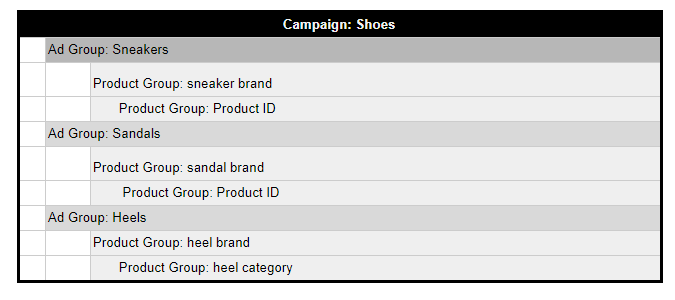
Now that you know the basic elements, we can construct some campaign strategy options.
Basic Google Shopping Campaign Structures
Google Shopping Strategy 1: One Campaign with One Ad Group
Due to its simplicity, this ‘beginner’ Google Shopping campaign structure is often an eCommerce advertiser’s first point of call and involves creating single campaigns that include a single ad group. Let’s say you are new to AdWords Shopping campaigns and sell one product type: yoga leggings. As you only sell one product, the product groups within your ad group wouldn’t be too technical.
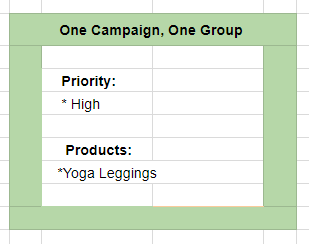
Advantages: Easy to set up and monitor when selling a single product type; best suited for Google Shopping newbies.
Disadvantages: Lack of segmentation and high directly in optimizing for the best ROIs.
As stated above, the process of creating one campaign with one group that is subdivided into various product groups is ideal for those just starting out and finding their feet with Google Shopping. However, this approach is very limiting in the long-run, as you will need to identify and then exclude poorly performing products from of thousands of products that are all lumped together in one group. It also makes it hard to see which search queries are bringing in the most sales, which you will need if you want to work on more complex structures that involve implementing negative keyword lists to sculpt queries.
Google Shopping Strategy 2: One Campaign with Numerous Ad Groups
The next on the basic Shopping campaign structures list is a simple, single campaign with numerous Ad Groups. Again, let’s use the yoga legging business as an example, which has now branched out into a variety of sports leggings. You could then create one campaign that includes a variety of ad groups based on product types such as yoga leggings, running leggings, short leggings and so on. Or if you’re still just selling yoga leggings, you could create groups around product topics such as price, design, popularity, etc. This type of structure therefore gives you clearer insight into which product types are performing better. It also means you are able to play around with adding different negative keywords to different groups.
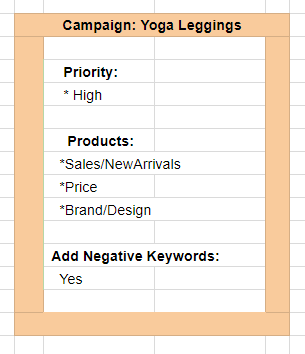
Advantages: Easier performance reporting and tracking per product type and being able to use negative keywords for better targeting.
Disadvantages: As you’re running only one campaign, all ad groups are sharing from the same campaign budget pool.
Google Shopping Strategy 3: Multiple Campaigns with Multiple Ad Groups
As the title says, this structure involves having multiple campaigns with multiple ad groups and is effective for online store owners who sell a variety of product types or brands or for those wanting to have tighter control of their budgets. So in this case, our yoga legging seller who is now selling a variety of products, would then create a campaign per category he sells in. This would mean that each campaign would be built around a certain category or type, with the groups focusing on individual products.
Advantages: Each of your product types or groups has their own budget and performance tracking can be segmented based on these splits.
Disadvantages: Involves a lot more time and effort to set up, monitor and optimize for stores with many types of products.
Google Shopping Strategy 4: Three Campaigns, Three Priorities
As mentioned in the introduction to this post, there are three priority options for your campaign and this campaign structure involves creating three campaigns, one for each priority. Here’s a reminder of what this type of structure may look like:

Advantages: These are easy to create and set up, but they give you much more control over your bids and performance. They also form the base of expert strategies, which you will learn about next.
Disadvantages: Having to manage multiple campaigns while creating multiple ad groups for multiple products makes it harder to manage and see where poor performers may be sucking your budget.
Expert Google Shopping Campaign Structure Strategies
Next, we will look at expert campaign structure strategy examples to help you granulate your campaigns and go from Google Shopping newbie to intermediate.
Google Shopping Strategy 5: Three Campaigns, Three Groups Using Query Sculpting
Tackling the lack of keyword control advertisers find with Google Shopping, this campaign strategy is a way of splitting campaigns by priority and then using search query patterns to boost campaigns.
This expert Google Shopping campaign structure enables you to bypass Shopping campaign limitations, bid according to product types, and search query patterns for improved ROIs. Simply put, this structure involves using negative keyword lists and product exclusions to create more segmented, highly-targeted campaigns, each with its own property settings, allowing you to pinpoint performance differences and optimize accordingly. This is often referred to as ‘query sculpting,’ using negative keyword lists.
Using Negative Keywords Lists
By adding negative keywords to specific Shopping campaigns, you can tweak who your ads won’t be shown to, and therefore have more control over where they WILL be shown. With Shopping campaigns, you can’t just add a negative keyword; instead, you need to work with your search term reports and add selections to your negative keyword lists. And you have a list for each campaign. For example:
* All Product Shopping: These are lists of search queries that you wouldn’t want for any Shopping campaigns.
* Brand Shopping: Would include any queries not associated to the brand you want to push.
The three campaign, three ad group structure, also known as the three-tiered priority campaign structure, therefore means creating three campaign types based on their priority. Then, using a variety of ways to split the groups using product exclusions and negative keywords, basically telling Google that all researchers, expect these, should be shown for this campaign.
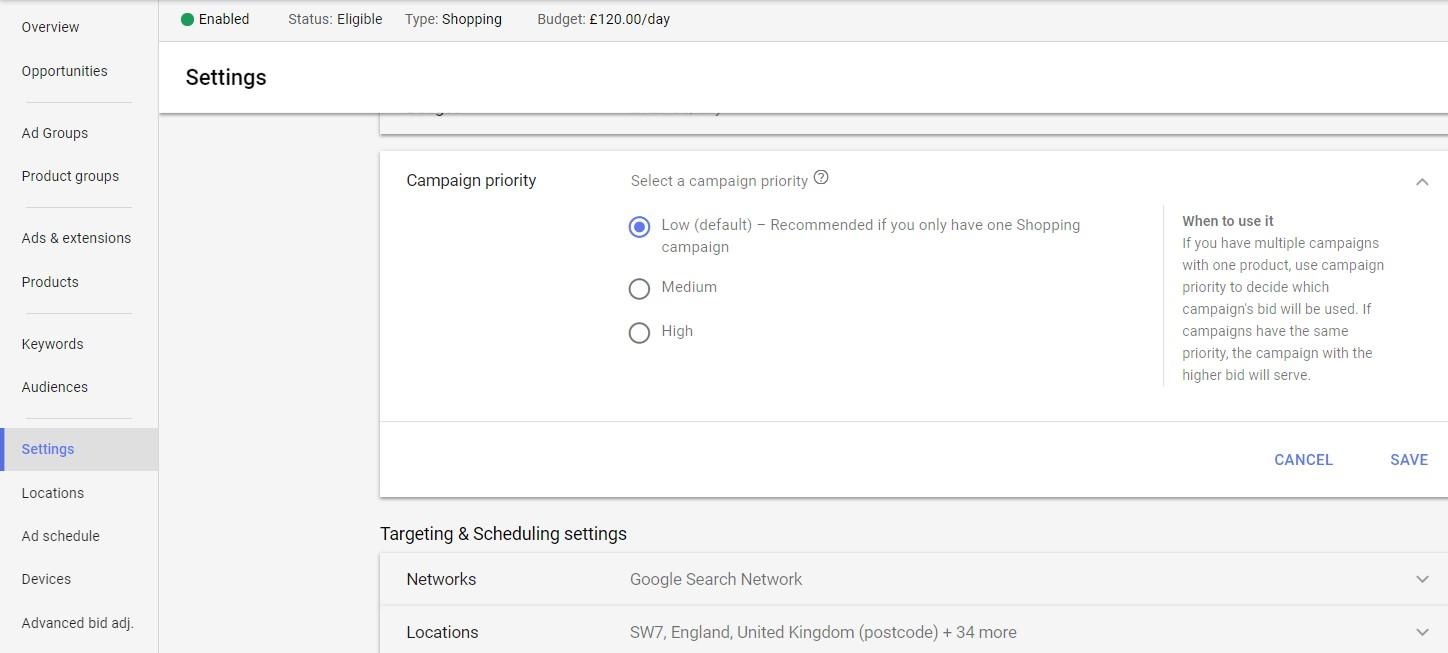
Advantages: This gives you more control over the search terms you’re actually bidding on, which therefore allows you to improve ROIs by enabling you to set location, audience and device bid adjustments based on the performance of negative keyword lists.
Disadvantages: This is a very challenging structure that will involve a lot more time, monitoring and testing. Additionally, as products are grouped together in campaigns, you have less performance control on a product level. It’s also important to note here that those with a huge number of products could get close to the negative keyword list limit of 5,000 negative keywords.
This structure might be a little challenging for a beginner, but it can give you more control over the length of the search queries associated with your campaign. We wouldn’t recommend testing this structure except in cases where you find certain search query lengths perform drastically differently. There are a variety of ways you can use this campaign structure or filtering by search terms but the trick, as we mentioned, is finding the right combination to fit your specific brand. Here are a couple three-tiered priority structures to give you a clearer idea of how this structure can work.
1. Three-Tiered Generic/Brand Priority Google Shopping Campaign Structure
As mentioned, the three-tiered priority campaign structure includes three campaigns in three priority settings. The high priority campaign could be grouped into: your top sellers or clearance items – basically the products you are most eager to sell; the medium priority could include specific product groups; while your low priority campaign could include all your products.
Let’s use a similar example to the one we used in the intro, and say you are an online seller selling shoes, socks and bags. The idea of this structure would be to use negative keywords to eliminate brand search terms when you use generic terms, and vise versa, ultimately using negative keyword lists to help ensure you are controlling when these ads are shown, ensuring they are showing for generic search terms. For instance:
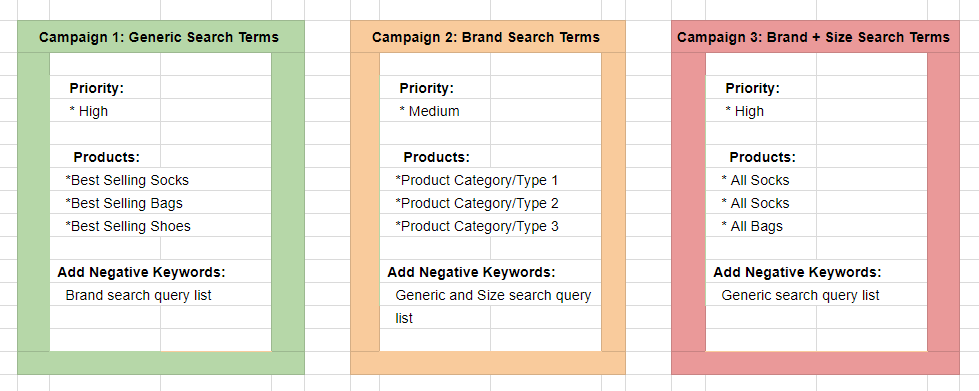
- For the high priority campaign, you may want Shopping ads to be show to more generic search terms, say, ‘running shoes’, so you would use a negative keyword list that includes brand-related keywords.
- For the medium priority campaign, you may want Shopping ads to show more to brand-related search queries, say, ‘Nike running shoes.’ So you would then use a negative keyword list that would include generic-related keywords and a negative keyword list that would include size-related keywords.
- For the low priority campaign, you may want Shopping ads to show more to brand and size related search queries, say, ‘Nike running shoes size 7.’ So you would then use a negative keyword list that would include generic-related keywords.
2. Three-Tiered By Query Length Google Shopping Campaign Structure
This is similar to the first example, but it instead, the negative keywords within each campaign are added to limit the search terms and is based on the length of the term you want your Shopping ads to be displayed to. The biggest challenge with this technique is that it involves a lot of admin: viewing the length of search queries, which can be seen in your Search Queries Report in Google Analytics, and then including them into your campaigns. We wouldn’t recommend testing this structure except in cases where you find certain search query lengths perform drastically differently. However, despite being challenging for a beginner, this structure can give you more control over the length of the search queries associated with your campaign.
There is nothing stopping you from drilling down your campaigns to target smaller segments, using negative keywords and therefore having multiple sets of three-tiered campaigns. But doing so, despite being effective, without outside campaign help from an agency or an app like Traffic Booster, can be a full-time job.
Google Shopping Strategy 6: The Profit Margin Approach
The next type of campaign strategy we will look at is dividing your campaigns based on the profit margins of your products, meaning each campaign will only have one group of products.
Let’s say you are manufacturing and selling printed clothing. You could divide your campaigns into three: generic, brand and brand+model no, excluding products that don’t yield favorable profit margins and grouping products in each campaign according to their margin. You could repeat this approach for each of the categories you sell:
Campaign Set 1
Campaign 1: T-shirts – Generic
Campaign 2: T-shirts – Brand/Type
Campaign 3: T-shirts – Brand/type SKU
Campaign Set 2
Campaign 1: Sweatshirts – Generic
Campaign 2: Sweatshirts – Brand/Type
Campaign 3: Sweatshirts – Brand/type SKU
Advantages: Narrowing down your campaigns to specific product categories with the highest margins means more control over your bids, more buying intent from searcher, and therefore higher conversion opportunities.
Disadvantages: For those of you with a wide variety of products, you will need to create a campaign set per product category, which can take a lot of work. This also limits your ability to ‘query sculpture’ campaigns at a specific product/SKU level.
Bonus Google Shopping Campaign Optimization Tips
Dealing With New Inventory Category Changes
Regardless of which structure you choose for maximum success, you want to make sure that your feeds are always synced in real-time to keep their profitability and include any inventory changes into the right product groups. Let’s say you have created an awesome Shopping campaign structure for your online pants, but you’ve just launched a new product on your site in a new category. This new product, which isn’t included in a specific group, will probably go into your general ‘catch-all’ campaign. This is not a huge deal when you’re adding one product sporadically, but when you are dealing with a lot of inventory changes, you don’t want all your new stock going into ‘catch-all,’ which can take your perfect structure out of sync very quickly.
To keep on top of this, you need to update the category lists in your Shopping campaigns or create a specific campaign for that category as quickly as possible. It should be part of your product launch/marketing checklist.
Dealing With a Limited Budget
If you have a smaller budget that doesn’t allow huge spend on ads or the resources you need to build highly granular campaign sets, then start by limiting the amount of products in your Shopping campaigns. You could filter your campaign to only include those products that have a high impression AdWords share, or by grouping by popularity based on your site’s sales stats. In other words, keep your campaigns small, find the products that bring you the best ROI for your limited budget and then as sales increase, start adding budget to high performers or adding new products to your campaigns. You can start with as few as 3-5 products, in a format that perhaps looks something like this:
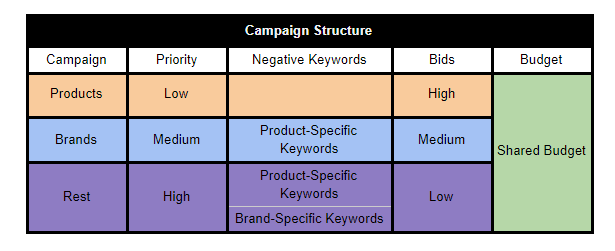
Pro Tip: By using Apps like Traffic Booster, you can all expertize, without having to pay any agency fees!
—
There you have it: top strategies for building the best Google Shopping campaign structures. Like with any AdWords placement option, the key to your success is testing and tweaking to find the highest-performing combination for your specific eCommerce brand!
We know it’s a lot to take in, so if you have questions, please don’t hesitate to post them in the comments and our expert Google Shopping campaign managers will help you out with the answers.
May the Google Shopping force be with you!
Digital & Social Articles on Business 2 Community
(120)
Report Post